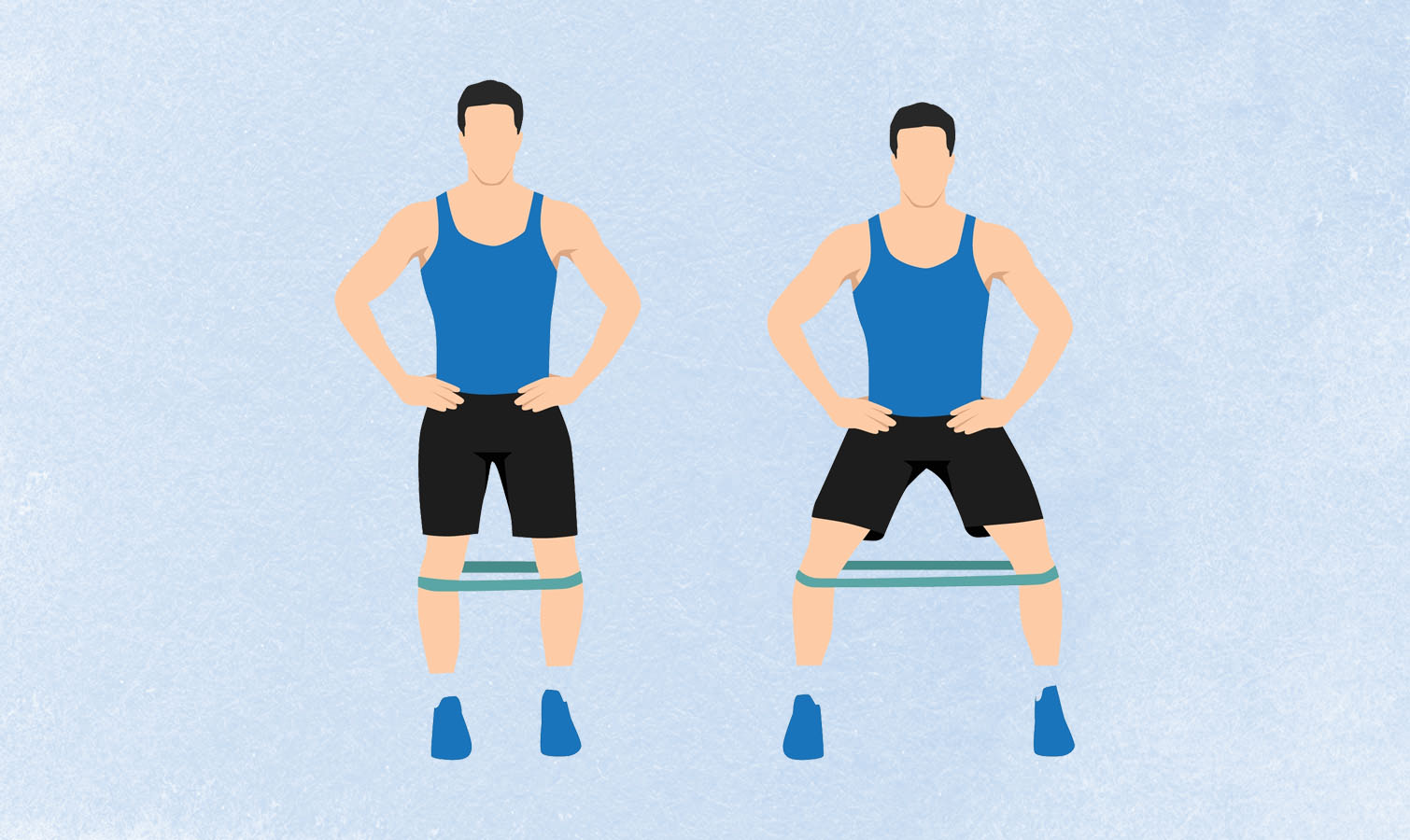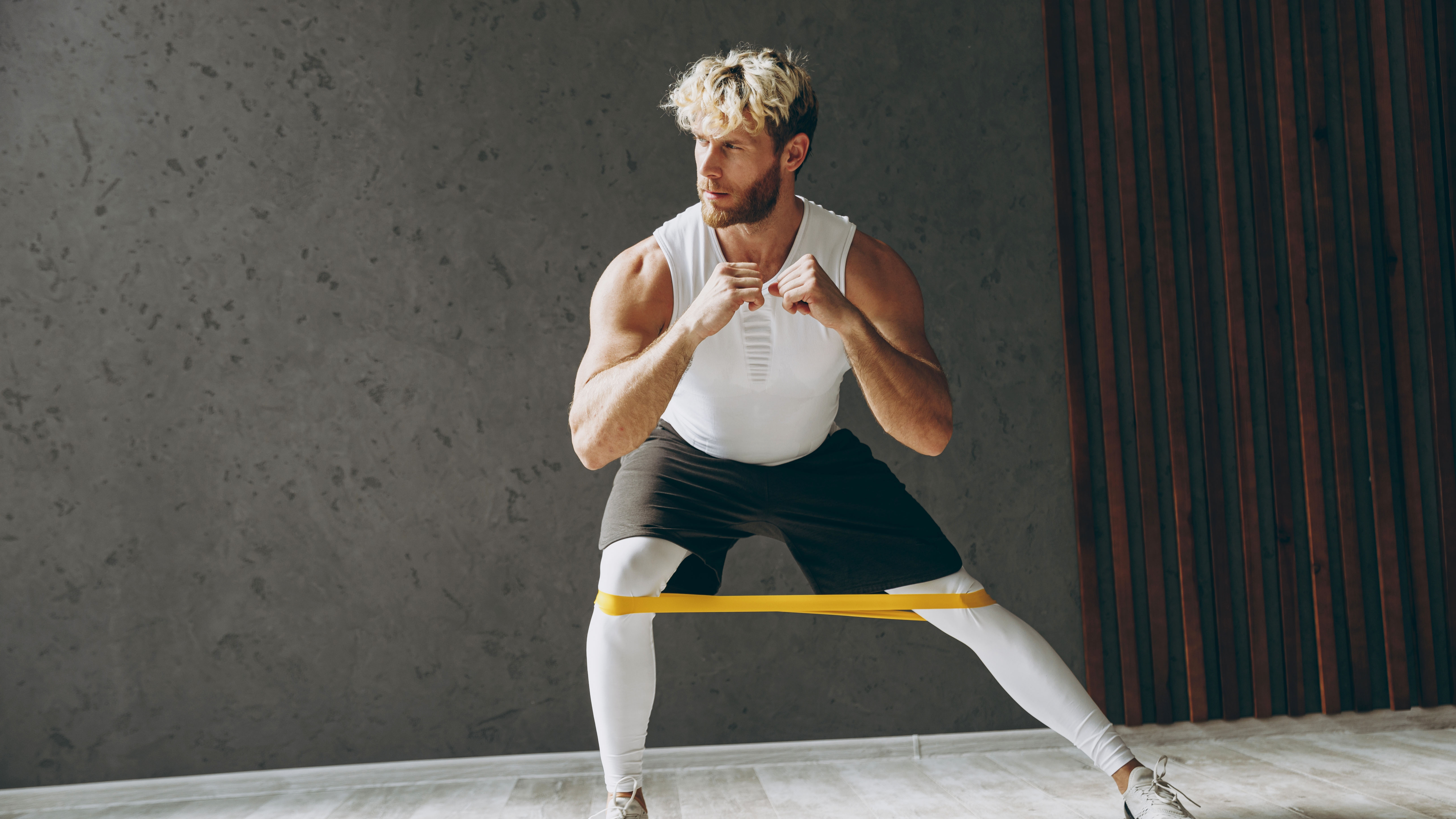Before we get into the pros and cons of side-stepping (also known as lateral walking or the lateral squat walk), it’s important to acknowledge a fundamental point: It looks weird. Moving side to side, whether that’s for 20 steps each way or two, is not something most of us do or see every day, or every year. But the thing to bear in mind is that many exercises look weird, it’s just that we’re used to seeing them being performed in the gym or park, or doing them ourselves. Think about the squat, for example. Looks damned odd, not to mention undignified. That said, we know that it works. And so does side-stepping. In fact, it is amazingly effective.
What is side-stepping?
Best performed with a resistance band, this move is fairly easy to do, but far from easy to maintain. It strengthens the glutes, especially the gluteus medius. This fan-shaped muscle, which lies on the outer side of the upper backside, is vital for pelvic stabilization and hip abduction (moving the leg away from the midline of the body), and it also aids a smooth, efficient gait. If you can’t visualise it, don’t worry: the exercise will very quickly let you know exactly where it is. The move also targets other hip abductor muscles such as the gluteus minimus (the smallest of the glutes, which lies beneath the gluteus medius) and the tensor fasciae latae, a small but important muscle that lies at the top of the hip, on the outside of the thigh. Strengthening these muscles will help protect your knee, as well as hip abductors reduce lateral stress on the knee joint, so that it tracks properly.
How do I side-step?

- Slide a resistance band up your legs until it sits just above your knee, with no twists in the band. The level of resistance in the band is up to you, but it’s a good idea to choose one that is not too tight.
- Place your feet about shoulder-width apart, so that the band is taut but not stretched.
- Bend your knees slightly and push your hips back, so you are in a half-squat position.
- With your core engaged, step your right foot to the right, then follow with the left. Keep your feet pointing straight ahead as you move sideways.
- From here, take another step or two before repeating the same number of steps the other way, continuing in this manner until you feel a burn (and you will). Some people use a yoga mat to ensure consistency. The other option is to continue in one direction for 10 or 20 steps, if you have the space (I cleared a path from kitchen to front door and woe betide anyone standing in my way), before returning to your start point.
I did some side-stepping for a week, and this is what happened
I used a medium resistance band and was glad of it. You may be able to fool yourself into thinking that this move — so simple to perform! — It is hardly worth the effort, and so reach for the band of greatest resistance, but your body will soon find you out. One day one, I managed three sets of 15 steps each way (so, 90 steps in total), and was shocked by how hard the move became. The burn in the side of my glutes was intense and highly concentrated.
Step it out… if possible
I had the space to take up to 20 steps (by the end of the week) before I had to return to the start position, and I was grateful. One day, I took the two-step approach and found it awfully boring. I had become used to seeing the delightful sights in my home — a door, bannisters, a mirror — so taking just two steps each way was quite a comedown from my travels. The exercise was just as effective, but I couldn’t quite shake the feeling I was becoming one of the witch’s Winkie Guards in The Wizard of Oz: When I caught myself chanting “Oh-ee-oh, ee-oh-oh…” I knew it was time to return to the longer walk.
Watch your feet
Your body will almost certainly try to make the move easier if it can. This will probably manifest in your feet, which may be inclined to turn slightly out to lessen the burn. Keep a close eye on them to ensure they remain pointed straight ahead. Feet will always try to take the easy way out. Also, keep your back straight in the half-squat and don’t stand up (even though you will want to as the reps add up). Form, as ever, is everything, even in a simple move such as this.
In the final analysis…
This is a superb exercise that you can do anywhere, and I’ll continue to do it a couple of times a week. A physio recently pointed out some issues with my overall movement pattern. She noted, for one thing, that when I perform a basic squat, I slide my right foot away from my body and, at the same time, turn my torso slightly to the left. Similarly, my right-leg single-leg squat is not a pretty thing, though it’s better than it used to be. This move has, I feel, begun to help address some of that imbalance. For the side-stepping week, I made sure to keep my feet in line and found it easier to activate my glutes for single-leg moves. We all know where our glutes are; it’s getting them involved in exercise that’s the problem.
One day, I moved the band down to my ankles and reduced the width of my steps. It worked just as well, but was less satisfying. It was odd to feel so worked over with so little movement. Find which versions suits you and don’t be put off by the relative lack of motion. In this case, small steps can lead to big gains.
More from Tom's Guide
- Forget running and swimming — study finds this sport adds 10 years to your life
- Over 60? Forget running and swimming — these 5 bodyweight exercises help strengthen your entire body, using just a chair
- I thought power walking was weird — here's what happened when I tried it 30 minutes a day for one week
.png)












 English (US) ·
English (US) ·